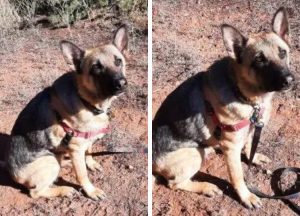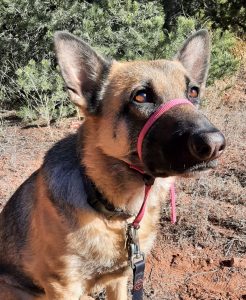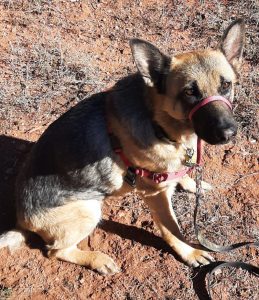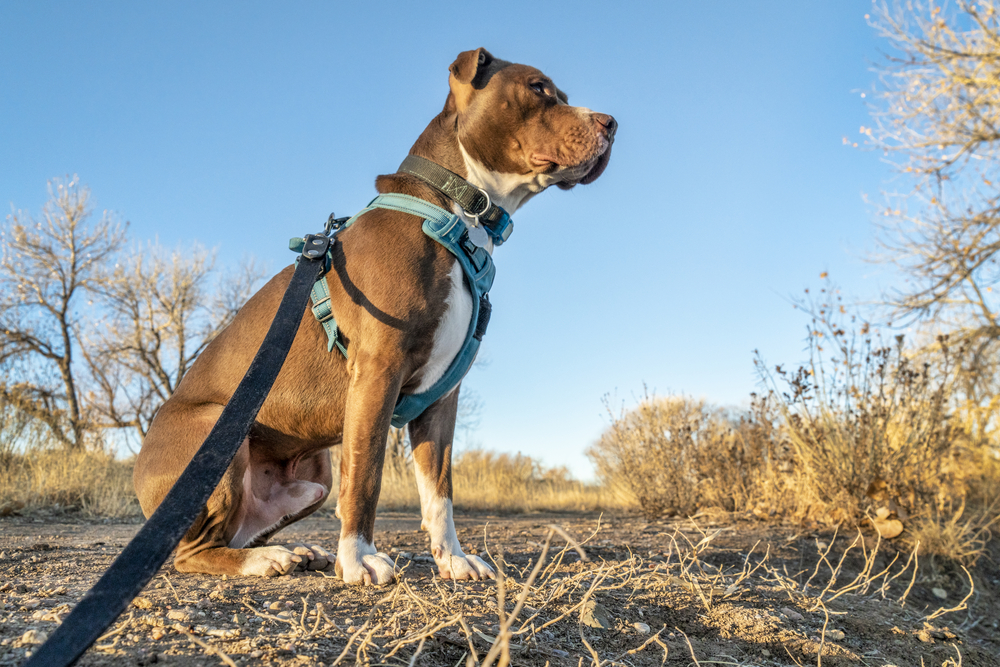There’s a lot of equipment out there for a dog to wear, and it can get quite confusing about the types of equipment and what goes where and when to use it.
The most common piece of equipment a dog wears is the collar, which is used for not only identification of the dog but also as a way to attach a leash for walking the dog.
Another common piece of equipment would be a harness, which is most often used to aid in walking the dog but can also be used in lieu of a collar. But can a dog wear a collar and a harness at the same time?
Dogs can wear a collar and a harness at the same time for safety reasons or if the dog is being walked and requires a special walking harness. In most situations, it would not make sense for a dog to wear both a collar and a harness at the same time.
Below we’ll discuss why it’s generally OK for a dog to wear both a collar and a harness at the same, and what situations a dog might be in that could call for them to wear a collar and a harness at the same time.
We’ll look at the pros & cons to using both a collar and harness, as well as when you should not use a collar and harness at the same time. I’ll also discuss some of the varieties of harnesses that are best to use in combination with collars, and some alternatives to the collar/harness combination.
Can A Dog Wear A Collar And A Harness At The Same Time?
Dogs can absolutely wear a collar and a harness at the same time! In fact, it’s actually pretty common.
There are several situations in which it is useful for the dog to be wearing both types of equipment at once, or even necessary for them to be wearing both types of equipment at once.
We’ll take a look at a few of those situations below and discuss some of the pros and cons to using a harness and collar at the same time for each of the situations.
5 Situations Where A Dog Might Need A Harness & A Collar At The Same Time
Let’s look at the most common situations where both a collar and harness could be beneficial.
1. Going For Walks
The most common reason for a dog to wear a collar and a harness at the same time is because the owner uses the harness for taking the dog on walks (or to a vet appointment or anywhere outside of the house).
Most owners keep their dog’s identification tags, license, and rabies tag on their pup’s collar because the dog usually wears it all the time, but the owner will only put the harness on when they need to take their dog for a walk (and because it’s not usually recommended that a harness be left on all the time).
Many locations require that dogs have identification, licenses, and rabies tags on them at all times. While some dogs may wear a harness in lieu of a collar, most dogs will only wear a harness for walking purposes, so it doesn’t make sense to have to switch around tags to the harness just for a walk. So they will just leave their dog’s collar on and only put the harness on for their daily walks our other outings.
If your dog wears a front-clip walking harness, sometimes the harness can slide around, so attaching it to the collar can also keep the harness from slipping around.
In the images of my German Shepherd below, you can see an example of this. The image on the left shows a front clip harness and the leash has pulled the harness to the side while the image on the right shows the same harness but with the leash attached to the collar to keep everything in place.

In the first image, I did not attach Kenai’s harness to her collar, so the harness slipped and the leash went around and under her leg, causing discomfort. In the second image, I attached the leash to both the harness and the collar, which kept the harness from slipping to the side.
Provided the harness and collar do not interfere with each other and there is no discomfort to the dog, this is totally fine and can actually even add to the security of the equipment as a lot of harnesses now have a backup clip that you can attach to the dog’s collar as an added safety measure in case they slip out of either the collar or the harness.
Pros: Adds an extra layer of safety if the dog is an escape artist; The dog’s identification tags, license, and rabies tags remain on the dog
Cons: Some styles of harness can interfere with collars, causing discomfort for the dog
2. Training Assistance
When dogs are going through the leash training process, many trainers will ask that owners keep the harness and collar on the dog at the same time throughout the walk so that the owner can switch the leash between the two as the dog begins to transition from harness to collar in the late stages of the leash training process (because the goal of leash training is to eventually be able to walk the dog only with a collar and leash).
The leash training process is lengthy, and the use of equipment such as harnesses can help aid owners in this process (especially if the dog is stronger than you and you need a little bit of extra help). As the dog begins to understand what’s expected of them on a walk, the trainer will ask the owner to switch the leash connection from the harness to the collar at various points to see where the dog is at in its understanding of the process.
If all goes well, the dog is rewarded with a jackpot of treats, praise, and the leash stays on the collar attachment. If there is any tension when the leash is attached to the collar, then it is moved back to the harness, and we go back a step in the leash training process and try again at a later point.
Some owners and trainers will also attach the harness to the collar as an extra safety precaution if they have a “Houdini dog” who can slip harnesses. If the dog happens to slip a leg out of the harness, the leash will still be attached to the collar so the dog is unable to run off and the owner or trainer can quickly grab them and get them back into the harness.
Pros: Is a good tool to help evaluate where the dog is at in the training process; Adds a layer of safety in unpredictable outdoor environments if the owner needs to quickly switch back to the harness
Cons: Is difficult to utilize if the owner is using a back clip harness rather than a front clip harness; Constant clipping/unclipping can cause wear and tear on leash, harness, and collar connections
3. Medical Or Behavioral Reasons
Some dogs may require the use of both a collar or harness due to medical or behavioral reasons, mainly due to the added security they provide.
Paralyzed dogs or larger dogs who require more effort to move may need to wear harnesses in addition to their collars so that their owners can help them move around or lifted up and into a vehicle.
Dogs who have neurological conditions that cause sudden collapse may wear harnesses in addition to their collars so that their owners can quickly grab them and get them situated so they do not injure themselves.
Dogs who are dealing with severe behavioral issues such as anxiety or aggression may wear special harnesses in addition to their collars as an added security measure (especially when out in public) just in case they become triggered by something in the vicinity and their owner must maintain control of them to ensure the dog does not escape or pull their owner forward.
Pros: These harnesses are often heavy duty and allow for extra security; The harnesses used for medical issues, when used properly and cleaned regularly, are quite comfortable for the dogs to wear for extended periods of time
Cons: When used in dogs with behavioral issues, if the dogs make a sudden movement there is the potential for the harness to push up against the collar and become tangled with the collar if either piece of equipment is not fitted properly or used without the guidance of a trainer; Dogs must also be supervised while wearing both pieces of equipment to avoid the dog becoming caught up on objects if left unsupervised
4. Service Dogs & Other Working Dogs
Service Dogs often wear harnesses and collars at the same time. While Service Dogs are not required to wear any kind of identifying equipment per federal law, many handlers opt to purchase vests and harnesses and use them in conjunction with the dog’s collar.
Most of these harnesses sit further back on the dog’s shoulders than a typical walking harness, so there is little interference with the dog’s collar.
A lot of other working dogs, such as police dogs, search and rescue dogs, or airport sniffer dogs, also wear various harnesses and collars at the same time. While the type of harness they may wear varies depending on the job they are being asked to do, they are often required to wear them in addition to their work collars.
Pros: The harnesses are often specific to the jobs the dogs are asked to do, so they are made to be worn for extended periods of time and are unlikely to interfere with a collar
Cons: Many Service Dog harnesses are often fraudulently sold to the public under the guise that they are all that’s needed for your dog to be a Service Dog
5. Special Events
Sometimes it’s fun to dress up our pups! Events like Halloween, parades, costume parties, and so on are single events where it’s usually OK to put both a collar and a special costume or fashion harness on our four-legged friends.
Many pet costumes are built upon a typical step-in harness, and others also have collar attachments. So, it’s likely you’ll be leaving both on your pup when you step out of the house!
Plus, you always want to make sure you leave identification tags on your dog when going to any kind of event that’s super exciting with unusual sights and sounds, as even the most tolerant dog may become frightened and take off.
Pros: A lot of dog costumes have harnesses built into them, or they come with harness or collar attachments
Cons: None, provided the costumes do not cause any discomfort to your pup!
When Should I NOT Use A Harness & Collar At The Same Time?
This depends more on the individual dog and situation, but in general, you should not have your dog to wear a collar and harness at the same time if there is really no need for it (the exception would be for a single special event as I described above).
While fashion is fun, if there is no reason for a dog to wear both pieces of equipment 24/7, then it could potentially cause more harm than good. Many of the fashion harnesses can cause rubbing, hair loss, and other irritation if they are left on for long periods of time as they are not designed for comfort or practical purposes, and are mostly designed for looks.
While a dog can get caught up on objects and potentially strangle themselves wearing a collar or harness, if they are wearing both pieces of equipment at the same time then the chances of them getting caught up increase and it’s also less likely they’ll be able to wriggle out and more likely that they’ll only become further entangled.
It also does not make sense to use both a collar and harness at the same time for leash training if the harness is not providing the assistance that you or your pup needs, or if you are not providing training in conjunction with the equipment usage.
Continuing to use both might actually create more problems with pulling and could potentially cause damage to the dog’s neck if you are attaching the leash to both the collar and the harness.
Alternative Suggestions To The Harness & Collar Combo
While there’s usually nothing wrong with using both a harness and collar at the same time (depending on how you are using them), there are a few alternatives you can also look at if your pup is uncomfortable with wearing a collar and harness at the same, if wearing a collar and harness at the same time is not working for your dog training-wise, or if there is some other reason as to why wearing both a collar and a harness at the same time just isn’t right for your dog.
Head Halter
While I always suggest that my training clients start out with a front-clip harness like the EasyWalk harness on Amazon (I do not recommend back-clip harnesses as those can actually encourage a dog to pull), if they’ve got a particularly strong puller I’ll have them try out a head halter like the Gentle Leader which you can also get on Amazon.
The head halter is another humane aid that can assist with leash training when paired with positive reinforcement and reward-based training methods. A head halter is not a muzzle and works similarly to a horse halter in controlling the dog’s head (where the nose goes, the body follows).
It is made to be worn in conjunction with a collar, and almost all head halters come with a specific collar attachment for added security. When properly introduced and used, the head halter a safe, effective way to assist in leash training, though it is not for every dog and every pulling situation.
Here is my German Shepherd Kenai wearing her head halter, though she has since transitioned to wearing a collar and leash for walks (most of the time!). As you can see, it is also directly attached to her collar and there is no interference with the collar or leash.

As with any piece of equipment (collar, harness, head halter, or otherwise), these are not miracle workers and must always be paired with training in order to be effective and for owners to see any results with their dogs. Reward-based training utilizing positive reinforcement methods will yield long-term results and is the best way to introduce a dog to the head halter (or any other type of equipment or behavior, for that matter!).
You can also utilize the same transition training method described earlier in this article when switching from a head halter to a harness, and it’s likely your pup will be wearing their collar at the same time throughout this process as well, just as if they would be when transitioning from a walking harness to just a collar and leash in the final stages of leash training.
Here is an example of what that would look like with Kenai, who is demonstrating with all three pieces of equipment (head halter, harness, and collar), and the leash would be moved between the halter and harness as needed throughout the walk depending on the dog’s pulling behavior, and would be in combination with positive reinforcement training.
Kenai has long since transitioned to just a collar and leash so she was a little unsure as to why she had to wear all of this again, which you can see in her body language!
Also, in this particular image, I have the leash connected to all three pieces of equipment at once so that the connections can be seen in the image, but this would be impractical for actual usage in leash walking and the equipment would interfere with each other if used in this way.

Quick-Change Tag Attachments
If your pup needs a harness but they are unable to wear both a collar and harness at the same time, you’ll need to think about their tags and having copies for both their collar and their harness.
You could get duplicates of their ID tags made, but it’s unlikely you’d be able to get duplicates of their license and rabies tags made and if your location requires those to be on your dog at all times, you could run into trouble when out and about with your pup.
An alternative could be getting one of the quick-change tag attachments like the GoTags on Amazon that allows you to quickly and easily swap out tags and licenses between equipment.
Depending on the size of your dog this may not be an option (as many of the attachments are quite large and are best suited for medium to large sized dogs), but you could also easily create your own using a carabiner clip or some other type of key chain and S-hooks to attach the tags to.
Just make sure it’s a secure clip that won’t come undone if your dog is active!
Closing Thoughts
It’s usually OK for a dog to wear a collar and harness at the same time, but if you are considering this just make sure it makes sense for your dog and his situation.
First and foremost, make sure your pup is comfortable when wearing both types of equipment and that one does not interfere with the other, especially if you are using them for training or security purposes.
You can also look at some alternatives to the harness/collar combo that might work even better, and when in doubt you can always reach out to a local trainer to help you determine what’s best for your pup.

